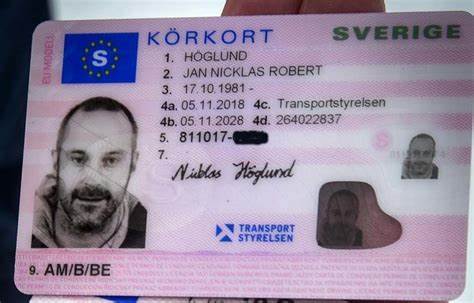
13
апреля5 Clarifications On Buy Driver's License Certificate
Navigating the World Without a Driver's License: Exploring Alternatives and Implications
In today's world, where movement is a foundation of life, the idea of living without a driver's license might seem complicated. Nevertheless, for some individuals, the decision to pass up a driver's license is a mindful choice driven by numerous aspects, including environmental issues, cost, and individual preference. This article explores the alternatives to driving and the ramifications of living without a driver's license, offering a thorough guide for those considering this lifestyle.
Comprehending the Decision
Selecting not to have a driver's license is a personal choice that can stem from several reasons. For some, it's a dedication to decreasing their carbon footprint and promoting sustainable living. Others find the expense of owning and preserving a car excessive, while some merely prefer the benefit and flexibility of other modes of transportation. No matter the inspiration, living without a driver's license requires cautious planning and a willingness to adjust.
Alternatives to Driving
Public Transportation
- Buses and Trains: Public transportation systems, such as buses and trains, are frequently the most reliable and cost-effective options. They are accessible in the majority of metropolitan locations and provide a structured method to browse cities and rural regions.
- Train and Light Rail: In bigger cities, subways and light rail systems use fast and efficient travel, often bypassing heavy traffic and minimizing travel time.
Ride-Sharing Services
- Uber and Lyft: These popular ride-sharing apps offer on-demand transportation, making it easy to navigate without a car. They are especially beneficial for late-night travel and in areas with restricted mass transit.
- Carpooling: Joining or forming carpool groups can decrease expenses and environmental impact. Lots of neighborhood platforms and apps facilitate carpooling for routine commutes.
Bicycles and E-Scooters
- Bicycles: Cycling is a healthy and environmentally friendly method to take a trip, particularly for shorter ranges. Lots of cities have actually committed bike lanes and bike-sharing programs to motivate this mode of transportation.
- Electric Scooters: E-scooters are a fashionable and practical option for fast, brief journeys. They are often readily available through rental services in city locations and can be an enjoyable option to standard modes of transportation.
Strolling and Jogging
- Walking: For those residing in walkable communities, walking is a basic and reliable way to remain active and navigate. It's complimentary, needs no unique equipment, and is good for the environment.
- Jogging: Similar to strolling, jogging can be a healthy and inexpensive method to travel, specifically for short ranges.
Electric and Hybrid Vehicles
- Electric Scooters and Bikes: For those who still desire the benefit of an individual car but are worried about the environment, electric scooters and bikes are a feasible alternative. They are low-maintenance and produce less emissions.
- Hybrid Cars: If the choice to avoid a driver's license is mainly due to ecological concerns, however the requirement for a car is inevitable, hybrid automobiles offer a middle ground. They combine traditional fuel engines with electrical motors to minimize fuel consumption and emissions.
Telecommuting and Remote Work
- Work from Home: Many business now offer remote work alternatives, enabling staff members to work from home or other locations. This can significantly lower the requirement for daily commuting and the associated expenses.
- Virtual Meetings: Technology has actually made it possible to carry out service conferences and other interactions practically, further minimizing the requirement for travel.
Ramifications of Living Without a Driver's License
Financial Savings
- Minimized Vehicle Costs: Not having a car means preventing expenditures such as car payments, insurance coverage, upkeep, and köpa a2 Körkort (telegra.ph) fuel.
- Mass Transit Costs: While public transportation does have costs, they are normally lower than those related to owning a car.
Environmental Impact
- Lower Carbon Emissions: By preventing the use of individual automobiles, people can substantially decrease their carbon footprint, contributing to a more sustainable environment.
- Reduced Traffic Congestion: Fewer cars and trucks on the road can cause minimized traffic jam, making travel more effective for everybody.
Health Benefits
- Increased Physical Activity: Using options like walking, jogging, and cycling can enhance physical health and mental wellness.
- Minimized Stress: Avoiding the day-to-day inconveniences of driving, such as traffic and parking, can cause a more unwinded and worry-free lifestyle.
Social and Community Engagement
- Neighborhood Connections: Relying on public transport or ride-sharing services can cultivate a sense of community and social interaction.
- Support for Local Businesses: Walking or cycling to regional companies can assist support the regional economy and decrease dependence on big, environmentally unfriendly corporations.
Legal and Practical Considerations

- Recognition Issues: In many nations, a driver's license works as a main kind of identification. Individuals without a license may need to carry alternative types of ID, such as a passport or state-issued ID card.
- Travel Restrictions: Without a driver's license, travel to remote areas or locations with restricted public transportation can be difficult. Planning ahead and using alternative transport approaches is important.
Frequently asked questions
Q: How can I get around if I reside in a backwoods without a driver's license?
- A: In backwoods, options like ride-sharing services, carpooling, and mass transit might be limited. Think about signing up with community groups or KöPa A1 KöRkort Online platforms to find regional carpooling choices. Electric scooters and bikes can likewise work for much shorter distances. In addition, lots of rural locations have community transportation services that can be accessed for vital trips.
Q: Can I still travel worldwide without a driver's license?
- A: Absolutely. A driver's license is not required for a lot of international travel. However, you may need a passport or other kinds of recognition. For nations where driving is essential, you can rent a car with a legitimate driver's license or usage regional transportation services.
Q: What are the very best apps for discovering ride-sharing and carpooling choices?
- A: Popular apps for ride-sharing consist of Uber, Lyft, and Bolt. For carpooling, Waze Carpool, Ridester, and Scoop are extremely recommended. These apps frequently provide real-time information on readily available rides and help connect you with drivers heading in the very same direction.
Q: How do I manage without a driver's license if it is needed for lots of types of recognition?
- A: In lots of places, a state-issued ID card or a passport can work as a primary form of recognition. It's also an excellent idea to carry multiple kinds of ID, such as a charge card or a voter registration card, to guarantee you are prepared for different scenarios.
Q: Are there any health threats associated with using mass transit?
- A: While public transport can expose individuals to a higher danger of transmittable illness, especially in crowded conditions, the benefits typically surpass the dangers. Practicing excellent health, such as cleaning hands regularly and wearing a mask, can assist alleviate these risks. Furthermore, lots of mass transit systems have carried out safety procedures to safeguard guests.
Q: What are the ecological benefits of not driving a car?
- A: Not driving a car can considerably decrease your carbon footprint. Cars and trucks are a major source of greenhouse gas emissions, and by going with mass transit, biking, or strolling, you can add to a much healthier environment. This likewise assists lower air contamination and traffic congestion, enhancing general quality of life.
Living without a driver's license is a possible and often useful option for lots of individuals. By exploring and making use of alternative modes of transport, one can conserve money, minimize their ecological impact, and enhance their health and wellness. While there are obstacles, such as browsing recognition and travel concerns, the benefits typically make the effort beneficial. Whether driven by individual values or Svensk köRkort practical factors to consider, the decision to give up a driver's license can lead to a more sustainable and satisfying way of life.
Extra Resources
- Public Transportation Apps: Transit, Moovit, köpa C köRkort Citymapper
- Biking and Walking Apps: Strava, MapMyRide, Google Maps
- Neighborhood Carpooling Platforms: Waze Carpool, Ridester, KöPa Taxilicens KöRkort Online Scoop
- Remote Work and Telecommuting Tools: Zoom, Microsoft Teams, Slack
By welcoming these alternatives, individuals can create a lifestyle that lines up with their values and requirements, adding to a more sustainable and connected world.

Отзывы